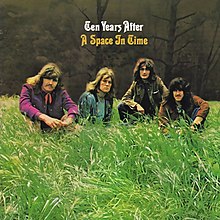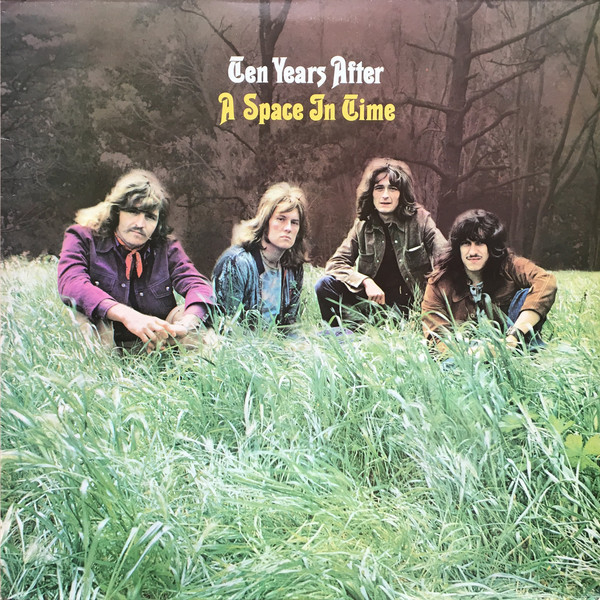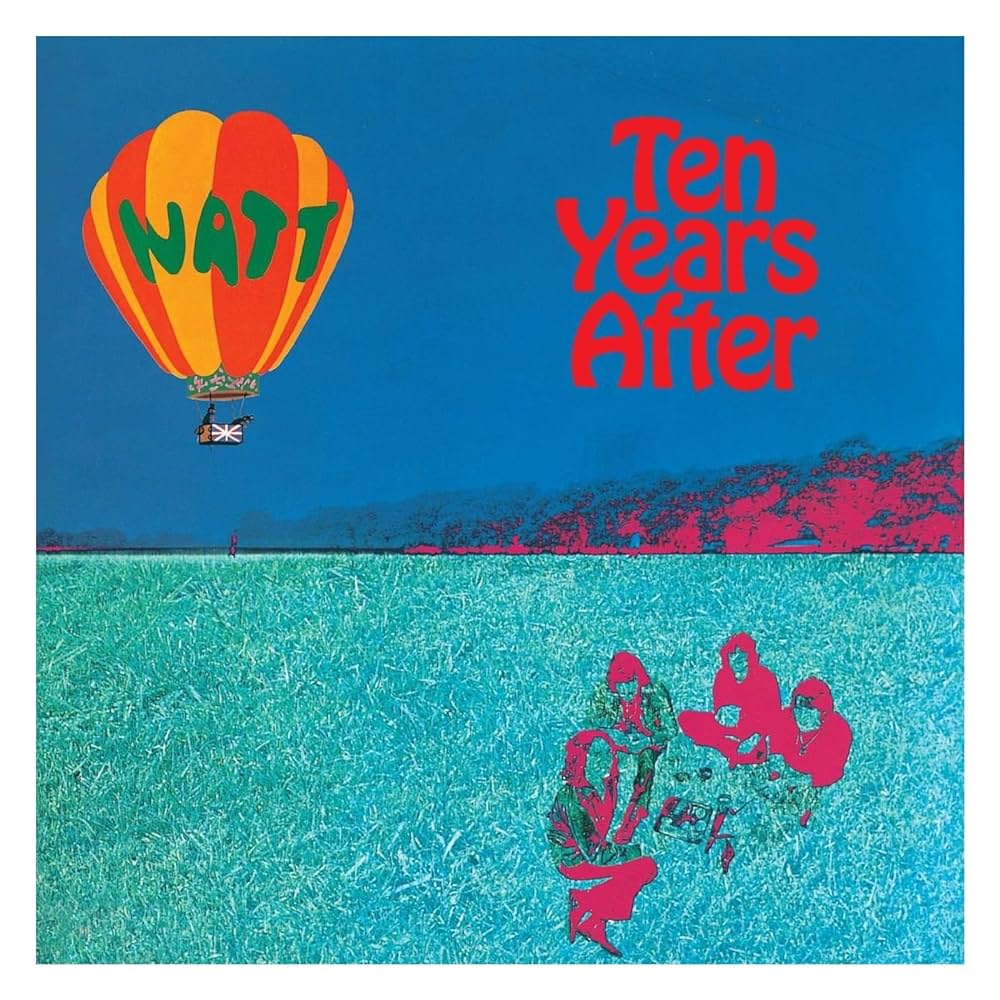
Rock and roll music
| A Space in Time | ||||
|---|---|---|---|---|
 | ||||
| Studio album by | ||||
| Released | August 1971 (Europe)[1] | |||
| Studio | Olympic Studios, London | |||
| Genre | Rock | |||
| Length | 37:04 | |||
| Label | ||||
| Producer | Ten Years After | |||
| Ten Years After chronology | ||||
| ||||
| Singles from A Space in Time | ||||
| ||||
One of These Days (2017 Remaster) · Channel: Ten Years After - Topic · 5m 59s


Ten Years After - Here They Come (2017 Remaster) (Official A... · Channel: Chrysalis Records · 4m 36s

I'd Love to Change the World (2017 Remaster) · Channel: Ten Years After - Topic · 3m 45s

Ten Years After - Over The Hill (2017 Remaster) (Official Au... · Channel: Chrysalis Records · 2m 29s

Ten Years After - Baby, Won't You Let Me Rock 'n' Roll You -... · Channel: Ten Years After on MV · 4m 30s

Ten Years After - Once There Was A Time (2017 Remaster) (Off... · Channel: Chrysalis Records · 3m 24s

Ten Years After - Let The Sky Fall (2017 Remaster) (Official... · Channel: Chrysalis Records · 4m 21s

Hard Monkeys (2017 Remaster) · Channel: Ten Years After - Topic · 3m 13s

Ten Years After - I've Been There Too (2017 Remaster) (Offic... · Channel: Chrysalis Records · 5m 46s

Ten Years After - Uncle Jam (2017 Remaster) (Official Audio) · Channel: Chrysalis Records · 2m 0s

A Space in Time
Ten Years After
Discográfica: ChrysalisColumbia · Estudio de grabación: Olympic Studios, London · Productor: Ten Years After
1971 studio album by Ten Years After
A Space in Time is the sixth studio album by the British blues rock band Ten Years After. It was released in August 1971 by Chrysalis Records in the United Kingdom and Columbia Records in the United States. A departure in style from their previous albums, A Space in Time is less `heavy` than previous albums and includes more acoustic guitar, perhaps influenced by the success of Led Zeppelin who were mixing acoustic songs with heavier numbers.[citation needed] It reached number 17 on the Billboard 200.[3]
Leer másReview
1971 studio album by Ten Years After
A Space in Time is the sixth studio album by the British blues rock band Ten Years After. It was released in August 1971 by Chrysalis Records in the United Kingdom and Columbia Records in the United States. A departure in style from their previous albums, A Space in Time is less `heavy` than previous albums and includes more acoustic guitar, perhaps influenced by the success of Led Zeppelin who were mixing acoustic songs with heavier numbers.[citation needed] It reached number 17 on the Billboard 200.[3]
Leer másThe third track on the album, "I`d Love to Change the World", is also their biggest hit. By combining a melodic acoustic chorus with challenging electric guitar riffs, they managed to produce a sound that hit number 10 in the charts in Canada[citation needed] and number 40 in the US.[4] Although this was their biggest hit, they rarely played it live. "Baby Won`t You Let Me Rock `n` Roll You" also charted, peaking at number 61 in the US,[4] and reaching number 54 in Canada.[5]
Critical reception
| Review scores | |
|---|---|
| Source | Rating |
| AllMusic | [6] |
| Christgau`s Record Guide | B−[7] |
| The Village Voice | B+[8] |
Billy Walker gave the album a generally positive review in Sounds. He noted the atypically soft sound of songs such as "Over the Hill" and "Let the Sky Fall" and approved of this "unexpected but pleasing dimension to the overall feel of the album", while simultaneously praising "the old TYA excitement" of tracks such as "I`d Love to Change the World" and "Baby Won`t You Let Me Rock `n` Roll You". He particularly praised Alvin Lee`s guitar work. However, he complained that a number of the tracks suffered from "lack of strength or projection of Alvin`s voice" and concluded "Ten Years After are a far better live band than their albums suggest; they get over much more of their charisma and excitement that has a job surfacing on their recorded work."[9]
Village Voice critic Robert Christgau said the album is one "in which the rock heavy comes of age with his toughest, fullest, and most coherent album. I like it in a way, but it does lack a certain winning abandon, and I`m not crazy about the heavy`s economic theories—fellow seems to believe that if you `tax the rich to feed the poor` you soon run out of rich, with dire consequences."[7]
Track listing
All songs by Alvin Lee except "Uncle Jam", which was composed by C. Churchill, A. Lee, R. Lee and L. Lyons.
Side one
- "One of These Days" – 5:52
- "Here They Come" – 4:27
- "I`d Love to Change the World" – 3:42
- "Over the Hill" – 2:28
- "Baby Won`t You Let Me Rock `n` Roll You" – 2:10
Side two
- "Once There Was a Time" – 3:20
- "Let the Sky Fall" – 4:19
- "Hard Monkeys" – 3:12
- "I`ve Been There Too" – 5:40
- "Uncle Jam" – 1:54
Personnel
Ten Years After
- Alvin Lee – guitar, vocals
- Leo Lyons – bass
- Ric Lee – drums
- Chick Churchill – keyboards
Technical
- Recorded at Olympic Studios, London
- Engineer – Chris Kimsey
- String arrangement on "Over the Hill" by Del Newman
- Front cover photograph – Ed Caraeff
- Back cover photograph – Alvin Lee
- Executive producer – Chris Wright
Charts
| Chart (1971–1972) | Peak position |
|---|---|
| Australian Albums (Kent Music Report)[10] | 18 |
| Canada Top Albums/CDs (RPM)[11] | 21 |
| Danish Album Charts (Hitlisten) | 8 |
| German Albums (Offizielle Top 100)[12] | 35 |
| Norwegian Albums (VG-lista)[13] | 13 |
| UK Albums (OCC)[14] | 36 |
| US Billboard 200[3] | 17 |
| Chart (2023) | Peak position |
|---|---|
| Scottish Albums (OCC)[15] | 24 |
| UK Independent Albums (OCC)[16] | 9 |
1971 studio album by Ten Years After
A Space in Time is the sixth studio album by the British blues rock band Ten Years After. It was released in August 1971 by Chrysalis Records in the United Kingdom and Columbia Records in the United States. A departure in style from their previous albums, A Space in Time is less `heavy` than previous albums and includes more acoustic guitar, perhaps influenced by the success of Led Zeppelin who were mixing acoustic songs with heavier numbers.[citation needed] It reached number 17 on the Billboard 200.[3]
The third track on the album, "I`d Love to Change the World", is also their biggest hit. By combining a melodic acoustic chorus with challenging electric guitar riffs, they managed to produce a sound that hit number 10 in the charts in Canada[citation needed] and number 40 in the US.[4] Although this was their biggest hit, they rarely played it live. "Baby Won`t You Let Me Rock `n` Roll You" also charted, peaking at number 61 in the US,[4] and reaching number 54 in Canada.[5]
Critical reception
| Review scores | |
|---|---|
| Source | Rating |
| AllMusic | [6] |
| Christgau`s Record Guide | B−[7] |
| The Village Voice | B+[8] |
Billy Walker gave the album a generally positive review in Sounds. He noted the atypically soft sound of songs such as "Over the Hill" and "Let the Sky Fall" and approved of this "unexpected but pleasing dimension to the overall feel of the album", while simultaneously praising "the old TYA excitement" of tracks such as "I`d Love to Change the World" and "Baby Won`t You Let Me Rock `n` Roll You". He particularly praised Alvin Lee`s guitar work. However, he complained that a number of the tracks suffered from "lack of strength or projection of Alvin`s voice" and concluded "Ten Years After are a far better live band than their albums suggest; they get over much more of their charisma and excitement that has a job surfacing on their recorded work."[9]
Village Voice critic Robert Christgau said the album is one "in which the rock heavy comes of age with his toughest, fullest, and most coherent album. I like it in a way, but it does lack a certain winning abandon, and I`m not crazy about the heavy`s economic theories—fellow seems to believe that if you `tax the rich to feed the poor` you soon run out of rich, with dire consequences."[7]
Track listing
All songs by Alvin Lee except "Uncle Jam", which was composed by C. Churchill, A. Lee, R. Lee and L. Lyons.
Side one
- "One of These Days" – 5:52
- "Here They Come" – 4:27
- "I`d Love to Change the World" – 3:42
- "Over the Hill" – 2:28
- "Baby Won`t You Let Me Rock `n` Roll You" – 2:10
Side two
- "Once There Was a Time" – 3:20
- "Let the Sky Fall" – 4:19
- "Hard Monkeys" – 3:12
- "I`ve Been There Too" – 5:40
- "Uncle Jam" – 1:54
Personnel
Ten Years After
- Alvin Lee – guitar, vocals
- Leo Lyons – bass
- Ric Lee – drums
- Chick Churchill – keyboards
Technical
- Recorded at Olympic Studios, London
- Engineer – Chris Kimsey
- String arrangement on "Over the Hill" by Del Newman
- Front cover photograph – Ed Caraeff
- Back cover photograph – Alvin Lee
- Executive producer – Chris Wright
Charts
| Chart (1971–1972) | Peak position |
|---|---|
| Australian Albums (Kent Music Report)[10] | 18 |
| Canada Top Albums/CDs (RPM)[11] | 21 |
| Danish Album Charts (Hitlisten) | 8 |
| German Albums (Offizielle Top 100)[12] | 35 |
| Norwegian Albums (VG-lista)[13] | 13 |
| UK Albums (OCC)[14] | 36 |
| US Billboard 200[3] | 17 |
| Chart (2023) | Peak position |
|---|---|
| Scottish Albums (OCC)[15] | 24 |
| UK Independent Albums (OCC)[16] | 9 |











